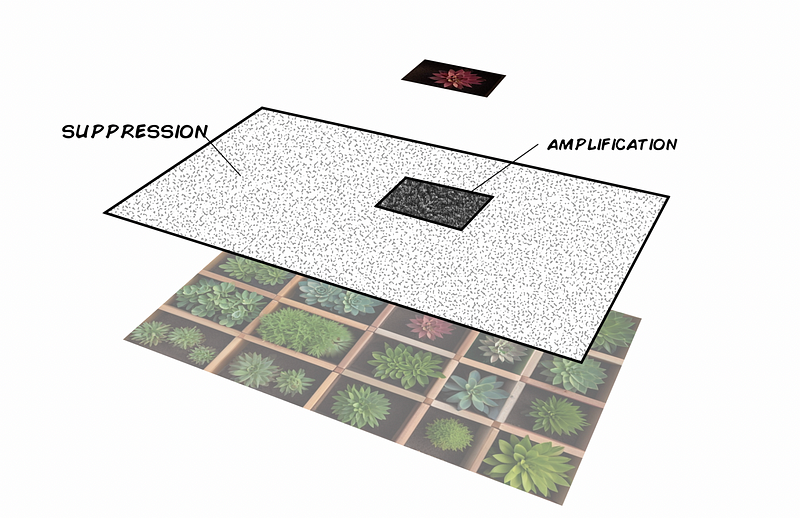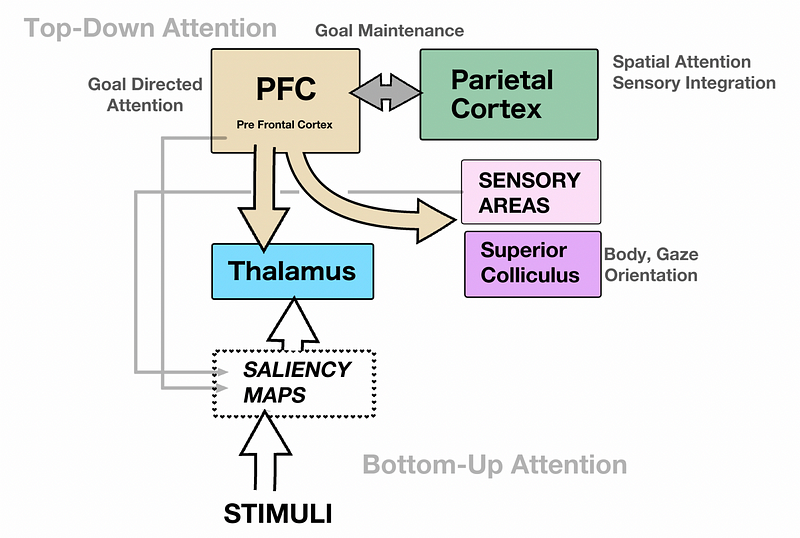Understanding Attention: A Deep Dive into Its Mechanisms
Written on

Attention is one of the essential yet frequently underestimated cognitive functions we possess. It influences our daily activities, from simple decisions to intricate choices in our personal and social lives. But how can we define attention? In broad terms, it can be described as:
The capacity to selectively concentrate on a particular set of stimuli, thoughts, or actions while ignoring others.
In any given setting, we encounter numerous stimuli, some of which are pertinent to us while others are not. Our sensory perception and cognitive processing have limits, thus necessitating a mechanism to identify what is relevant. To illustrate this, imagine I set a crate of plants before you:

Now, here’s the challenge: you are hungry, and all the plants are safe to eat except one, which is poisonous and could be fatal if consumed!
Attention, similar to memory and other cognitive abilities, is not a monolithic concept; it encompasses various modalities. You might notice a red plant in the mix, which could be the harmful one. While I have prompted you with the task to identify the toxic plant, your perception system instinctively registers salient stimuli, a process known as Bottom-Up attention.
Conversely, if I instructed you to locate the small round plant in the bottom row (fourth from the left), the effort to find it is termed Top-Down Attention. When we consciously choose what to focus on, we refer to this as "paying" attention; meanwhile, something that naturally captures our focus is said to "demand" our attention.
Models of Attention
Both external (sensory input) and internal (memories, thoughts) stimuli can be viewed as groups of neurons activating simultaneously. However, these functions are spread across various regions and sensory modalities (visual, auditory, tactile). Current theories propose that attention operates by either enhancing the firing rates of relevant neurons or inhibiting those that are distracting.

The processing of stimuli is distributed based on the type of attention. Top-Down attention is influenced by connections from higher cognitive areas, such as the prefrontal cortex, which modulates stimuli using neurotransmitters. In contrast, Bottom-Up attention utilizes saliency maps, derived from fundamental features like color contrast and frequency, to prioritize stimuli. Both systems also integrate memory, functioning concurrently to establish a robust but flexible attention system.

Key Areas Involved in Attention
It’s important to recognize that attention is not localized but rather dispersed throughout the brain via saliency maps and memory. Unlike other cognitive systems, such as vision, attention involves a more intricate interplay of regions. However, some areas are particularly noteworthy:
- Prefrontal Cortex: Associated with sustained attention, goal-directed tasks, and task-switching.
- Anterior Cingulate Cortex: Plays a role in maintaining goals and detecting errors.
- Parietal Cortex: Involved in spatial attention and sensory integration.
- Sensory Areas: Likely the origin of dynamic saliency maps that adapt based on memory and tasks.
- Thalamus: Acts as a central hub for both types of attention, filtering relevant stimuli for further processing.
The Multifaceted Roles of Attention
The ability to select or ignore relevant stimuli is just the beginning of what attention entails. Evolution often repurposes and intertwines functionalities; thus, both inhibition and amplification serve various cognitive purposes across different timescales.
Selective attention is vital for self-regulation. It influences whether you focus on important tasks or get sidetracked by distractions. In social contexts, it determines how you respond, weighing your options carefully or acting impulsively.
Despite its usefulness, attention is a limited resource. We can only concentrate on a finite number of stimuli, making it essential not to waste it.
In this context, marketers, news outlets, and other entities have become adept at manipulating our attention for profit. They often exploit our Bottom-Up attention by presenting novel stimuli that compel us to engage further. The common example is a captivating image that prompts the urge to seek out more content.
Being aware of these tactics is crucial, and limiting exposure to distractions can be a practical strategy. For those lacking self-discipline, total avoidance of certain distractions may be the only effective solution.
Attention is also crucial for memory retention; stimuli that capture our focus are more likely to be remembered. If you find yourself unable to recall a movie or lecture, it’s likely because it didn’t engage your attention effectively.
Moreover, attention plays a significant role over extended periods. Activities such as monitoring progress, correcting mistakes, and maintaining focus become increasingly important over time. For instance, committing to college or caring for a loved one involves long-term attentional efforts.
The Connection to Machine Learning and AI
In the realms of Machine Learning and AI, attention can be understood through a broader lens:
Attention is the adaptable management of limited computational resources.
As technology evolves, the specific algorithms used to model attention in AI will likely change. Currently, AI employs attention mechanisms to break down inputs and outputs into manageable pieces, enhancing the contextual understanding necessary for improved results. This process can be likened to analyzing lines of a poem one by one to grasp its overall meaning.
Consequences of Attention Dysfunction
What occurs when our attention systems falter? We all experience lapses in focus, like misplacing our keys—often a result of not concentrating on where we left them initially.
Attention has an optimal range; excessive focus can lead to anxiety, while insufficient attention hampers performance. On the more severe side, persistent attention deficits can wreak havoc in various aspects of life.
ADHD (Attention Deficit Hyperactivity Disorder)
ADHD encompasses a range of attentional issues. Due to the interconnected nature of attention, symptoms can vary significantly. Both developmental and acquired forms of attention deficits exist.
It's interesting to note that attention-related problems are relatively recent in terms of diagnosis (formalized in the 1980s). These "deficits" may not have been perceived as such in earlier societies and could have even served beneficial roles within groups. This area remains an evolving field of research.
In summary, this exploration of attention serves as a reminder of its importance in our lives. Though its mechanisms may be simple in theory, they are intricate in practice due to their multifaceted nature. In today’s world, it is increasingly vital to cultivate our attention, ensuring we remain in control of what captures our focus. Always remember to “pay” attention to your attentional choices and recognize the limitations that come with this essential cognitive resource.
Thank you for reading.
Note: This is a continuing project. You can find more information on this topic at the project site.
Sources/Bibliography: - Neuroscience Bibliography: Foundational texts on Neuroscience and AI can be accessed at k3no.medium.com.